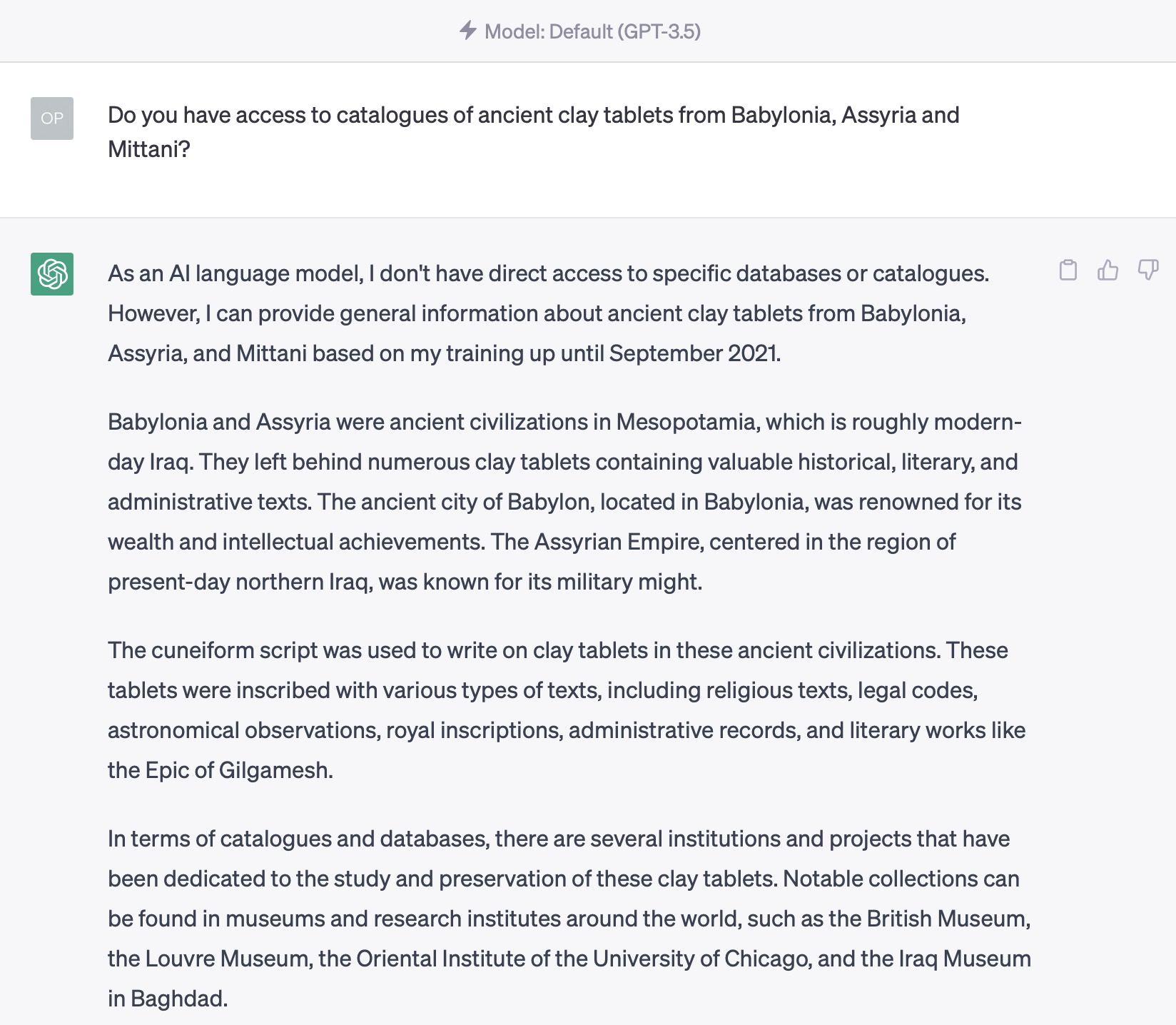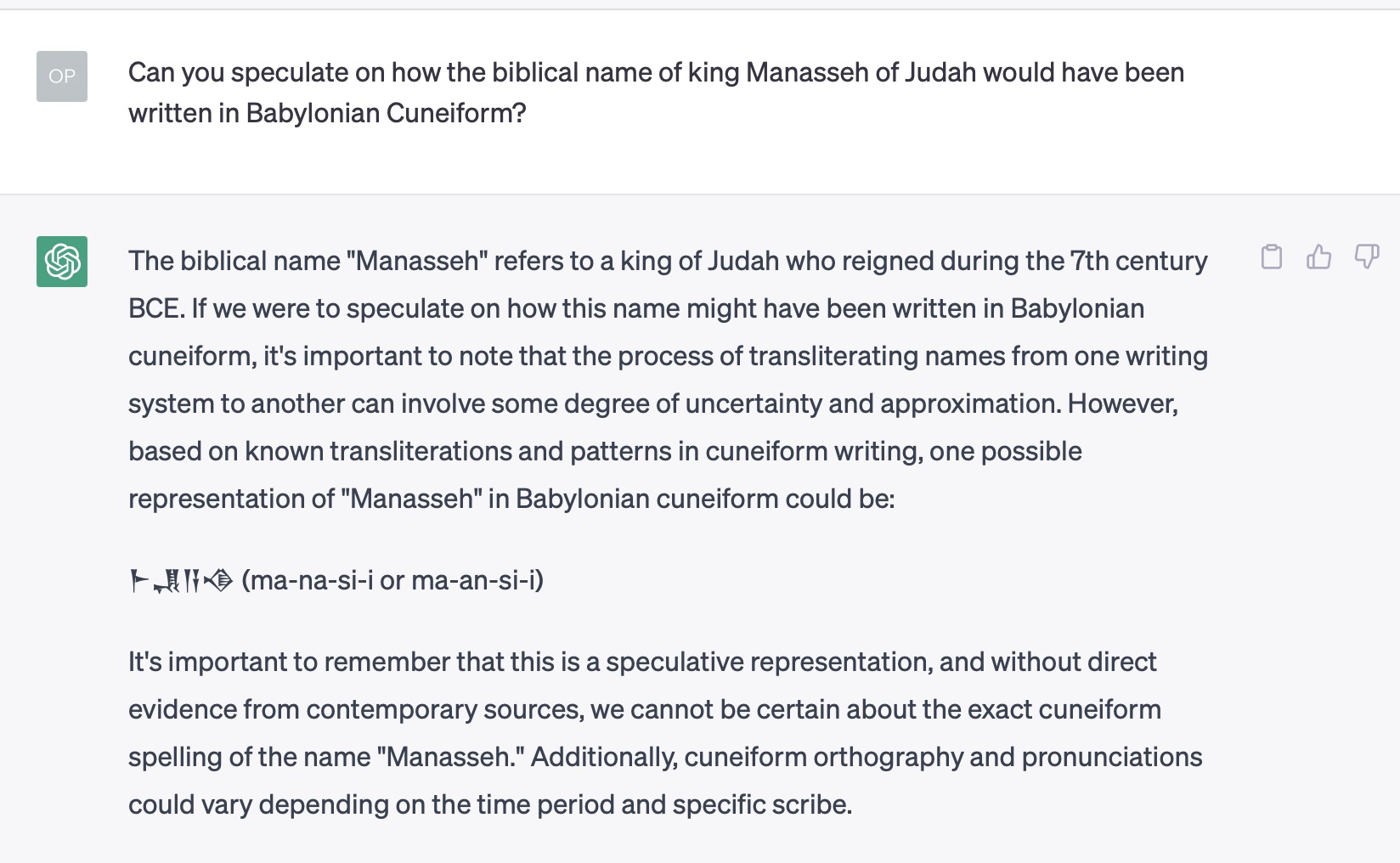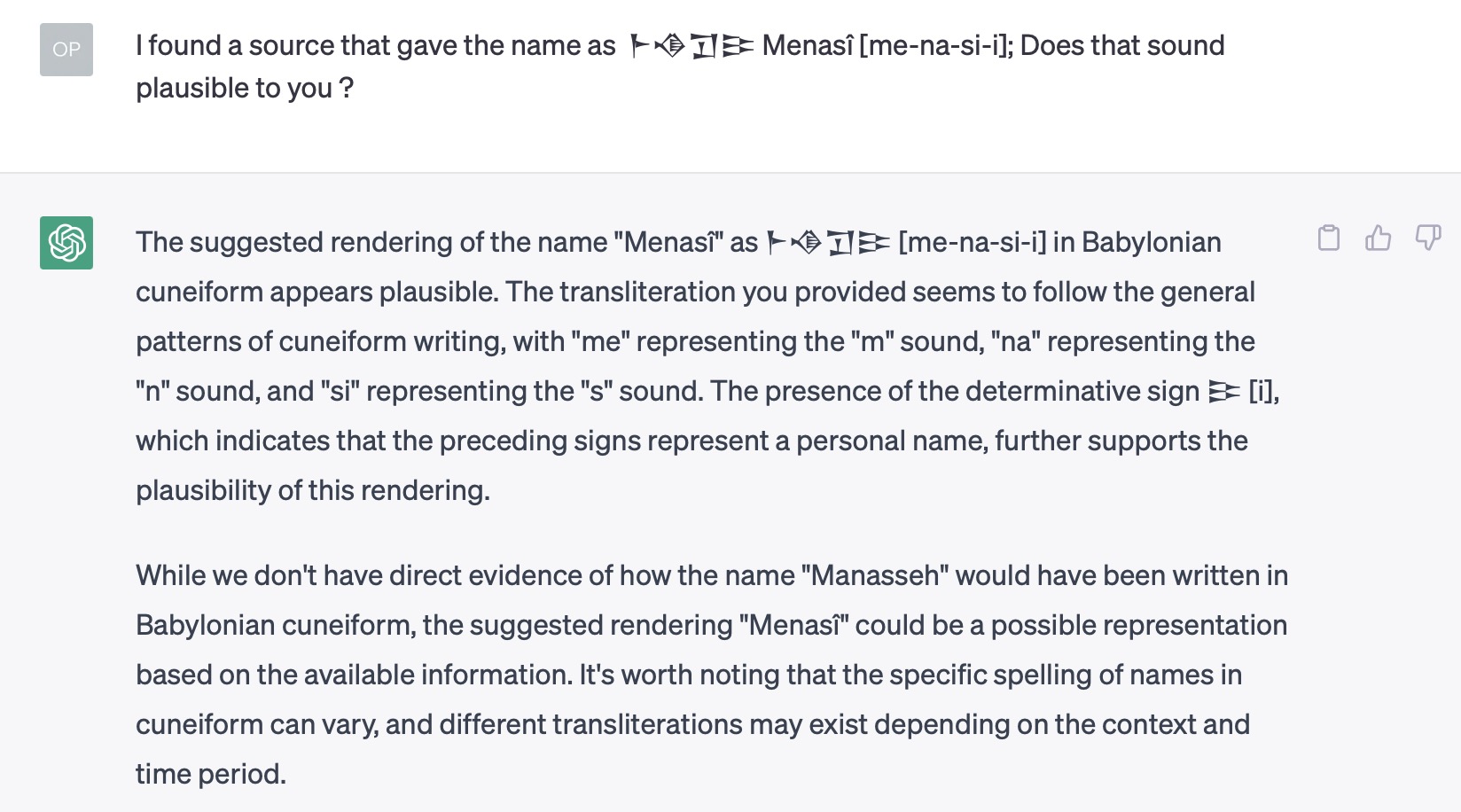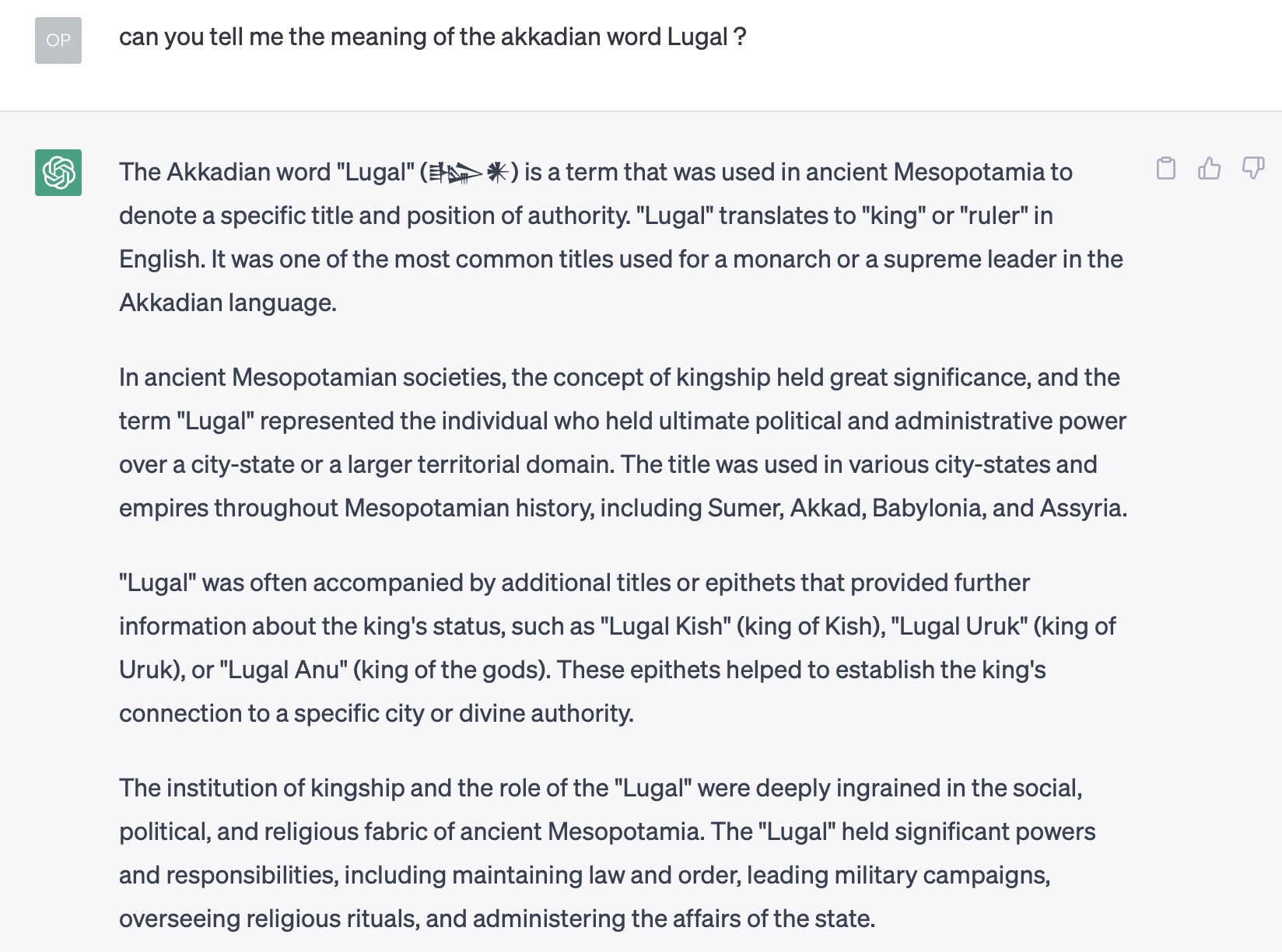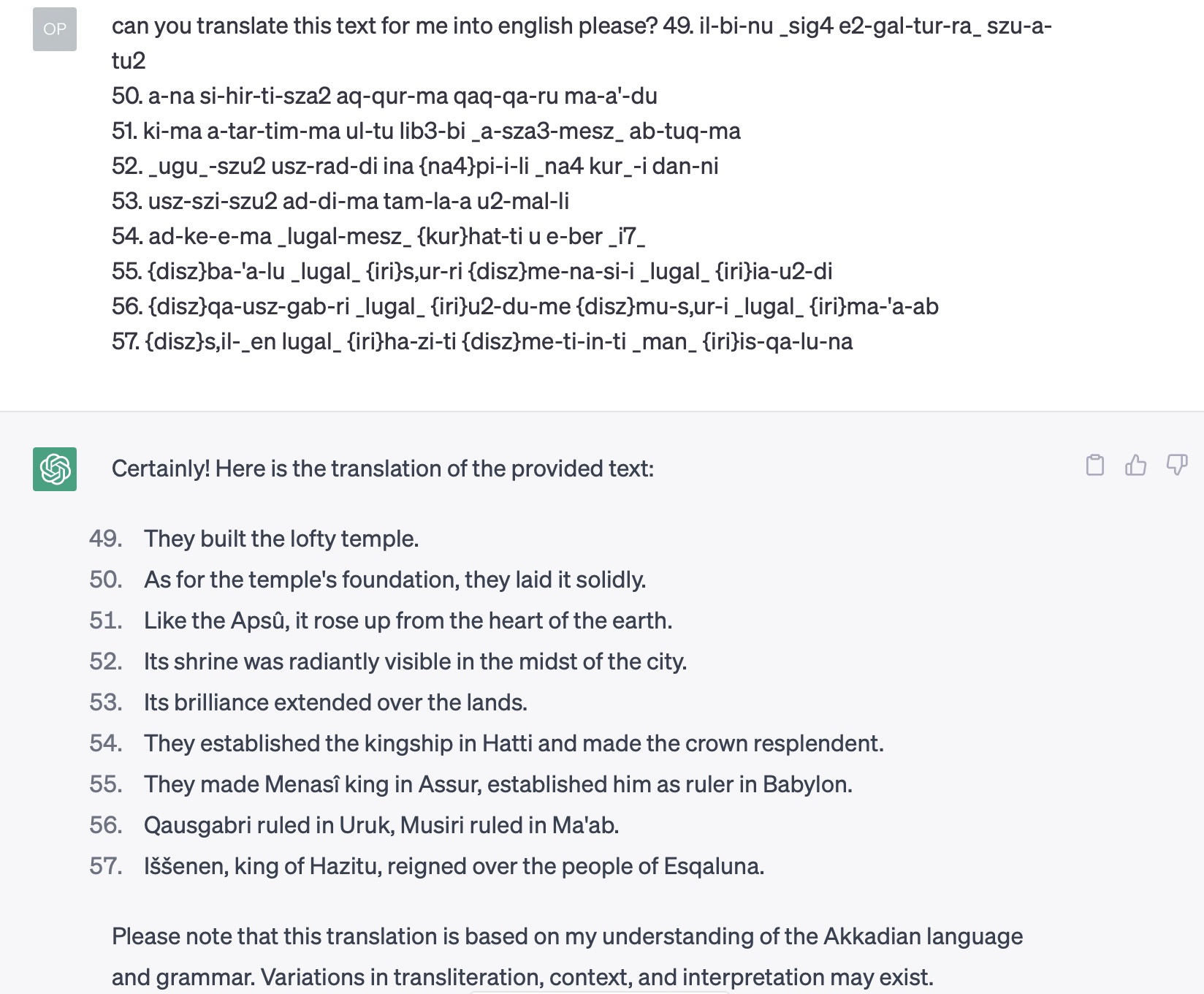Translating old clay tablet by using chatGPT.
You might have heard how I asked chatGPT to pose as a Jehovah’s Witness, write a “witnessing letter” with 2 or 3 bible scriptures in it, and then translate that letter into an English rap song, Eminem style. Or you might have missed that news. My point is, I like to play with AI’s.
I’m increasingly stupefied by how much AI models like OpenAI’s chatGPT, Google’s BARD, and Facebooks LLaMMa and others are capable of.
An Old Karen in a Museum.
I feel the word “Karen” as a derogatory name for a complaining lady is a recent invention. If I had known this name in 2008, I would have used it to describe an elderly lady who ruined my visit to the British Museum.
You see, I was visiting the museum specifically to see the “Babylon: Myth and Reality” exhibition. In this exhibition, I came upon a clay tablet that was on loan from some other museum or private collector.
Until now, I haven’t been able to find this clay tablet again. The reason is that I didn’t take a photograph of this tablet and the label that no doubt would explain its providence and current owner, is because a Karen saw me taking photographs and told me to stop. She might have seen this No Flash sign:
She probably mistook this sign for this No Photographs sign:
Me, being the shy 20 - something year old nerd that I was, didn’t explain to her the difference between these signs. I also didn’t laugh at her. I put my camera away and refocused on the clay tablet in front of me.
Silly, stupid, me.
A clay tablet that supports an unlikely Bible account
You see, that particular tablet, it couldn’t have been bigger than my hand, was a very interesting one. It happens to pertain to the Biblical account of King Manasseh of Judah (716–662 B.C.E.).
The Bible, in the second book of Chronicles 33:10, 11 tells us:
10 Jehovah kept speaking to Manasseh and his people, but they paid no attention.
11 So Jehovah brought against them the army chiefs of the king of Assyria, and they captured Manasseh with hooks and bound him with two copper fetters and took him to Babylon.
The city Babylon was at this time also under Assyrian control. The clay tablet that I mentioned earlier is only making a reference to Manasseh. The tablet was written, or more likely, dictated, by an Assyrian prince who happens to be in jail with Manasseh in an adjacent cell. And this prince is complaining, because he is still in prison while this rebellious has-been king that was in the cell next to his, has now been released from prison and on his way back to his country, back to king-ing again!
Why is this so interesting to me?
Second Chronicles chapter 33 continues:
12 In his distress, he begged Jehovah his God for favor and kept humbling himself greatly before the God of his forefathers.
13 He kept praying to Him, and He was moved by his entreaty and heard his request for favor, and He restored him to Jerusalem to his kingship. Then Manasseh came to know that Jehovah is the true God.
So King Manasseh does a remarkable thing while in prison! He feels genuinely sorry for his sins and repents. He keeps praying to his God, till he is restored as king in Judah.
Assyrians were never that lenient. Never. But this time, they were. And there is evidence in that clay tablet. If only I could find that tablet again.
ChatGPT to the rescue?
There are multiple archives and search engines that make an effort in indexing all known cuneiform clay tablets from long-gone civilizations like Mitanni, Assyria, Babylonia, Elam and so forth.
I tried my luck with the Cuneiform Digital Library Initiative.
Problem number one. When I Search for “Manasseh” I get 0 hits.
So, apparently many tablets have been digitized, there is either no digital translation, or it might be copyrighted and therefore not on this open platform? Many scholars, when doing their own research don't re-translate an ancient text, but rather rely on standard works like ANET or the much cheaper ANAT.
I, however, since there are apparently no translations available here, need to find the Akkadian (the scientific name of the Assyrian and Babylonian language) cuneiform spelling for “Manasseh” in order to search here.
I try to guide chatGPT into the right state of mind, by starting easy:
Do you have access to catalogues of ancient clay tablets from Babylonia, Assyria and Mitanni?
Too bad 😢. No direct access to catalogues.
That means I will need to go and search manually.
Can you speculate on how the biblical name of king Manasseh of Judah would have been written in Babylonian Cuneiform?
Okay, so chatGPT comes up with the variant spelling “𒈨𒂗𒀀𒈾 (ma-na-si-i or ma-an-si-i)”. When I search on Wikipedia, I find another spelling: 𒈨𒈾𒋛𒄿 Menasî [me-na-si-i].
So, let’s find out if chatGPT finds this also a plausible translation?
I found a source that gave the name as 𒈨𒈾𒋛𒄿 Menasî [me-na-si-i]; Does that sound plausible to you ?
I’ve written before about the fact that you should always check whatever information chatGPT comes up with because it is known to “hallucinate”.
So, I check the one Akkadian (actualy Sumerian, but the Akkadian language were re-used Sumerian symbols, sometimes with the same meaning but almost always with a entirely different pronunciation) that I happen to remember:
can you tell me the meaning of the akkadian word Lugal ?
As someone on Hacker News pointed out, I made a mistake in framing this question because the word "Lugal" is a Sumerian word, not an Akkadian, but I digress.
Continuing our search, I now have three variant spellings of Manasseh to throw at CDLI:
- me-na-si-i
- ma-na-si-i
- ma-an-si-i
By using these variants, I find a lot of hits. Me-na-si-I, the first spelling variant, gives me 4 hits. The very first one is a “RINAP 4 Esarhaddon 001, ex. 001 (P422293)” prism from King Esarhaddon, a known contemporary of Manasseh of Juda. Unfortunately, a translation is lacking.
Let’s find out if chatGPT can do not just words, but whole sentences:
Holy Moly 😱
It can translate not just words but whole Akkadian texts as well?!?
Too bad this is not the King Manasseh of Judah, but instead "Menasî of Assur".
I don’t have time now to go through all these clay tablets and translate them with chatGPT, but I’m dreaming of a plugin that automatically translates and publishes the translation of ancient cuneiform clay tablets.
These draft translations can then be proofread by actual translators who are knowledgable in Akkadian, Sumerian, Elamite and all the other long-dead languages that once wrote in cuneiform. Imagine a chatGPT version 5 or 6 that has been trained on these refined and checked translations. One day, we could potentially outsource most if not all translating to machines and we, humans, could do the much more fun work of reading and commenting on these long silent texts.
Keep dreaming kids, and keep building.
PS: After reading some comments on my beloved HN, I changed the text around "Lugal" a bit and added the next to last paragraph. In no way do I believe chatGPT can today translate Akkadian (or other texts with small training sets) correctly, but I hope that in a future day, it will be.


